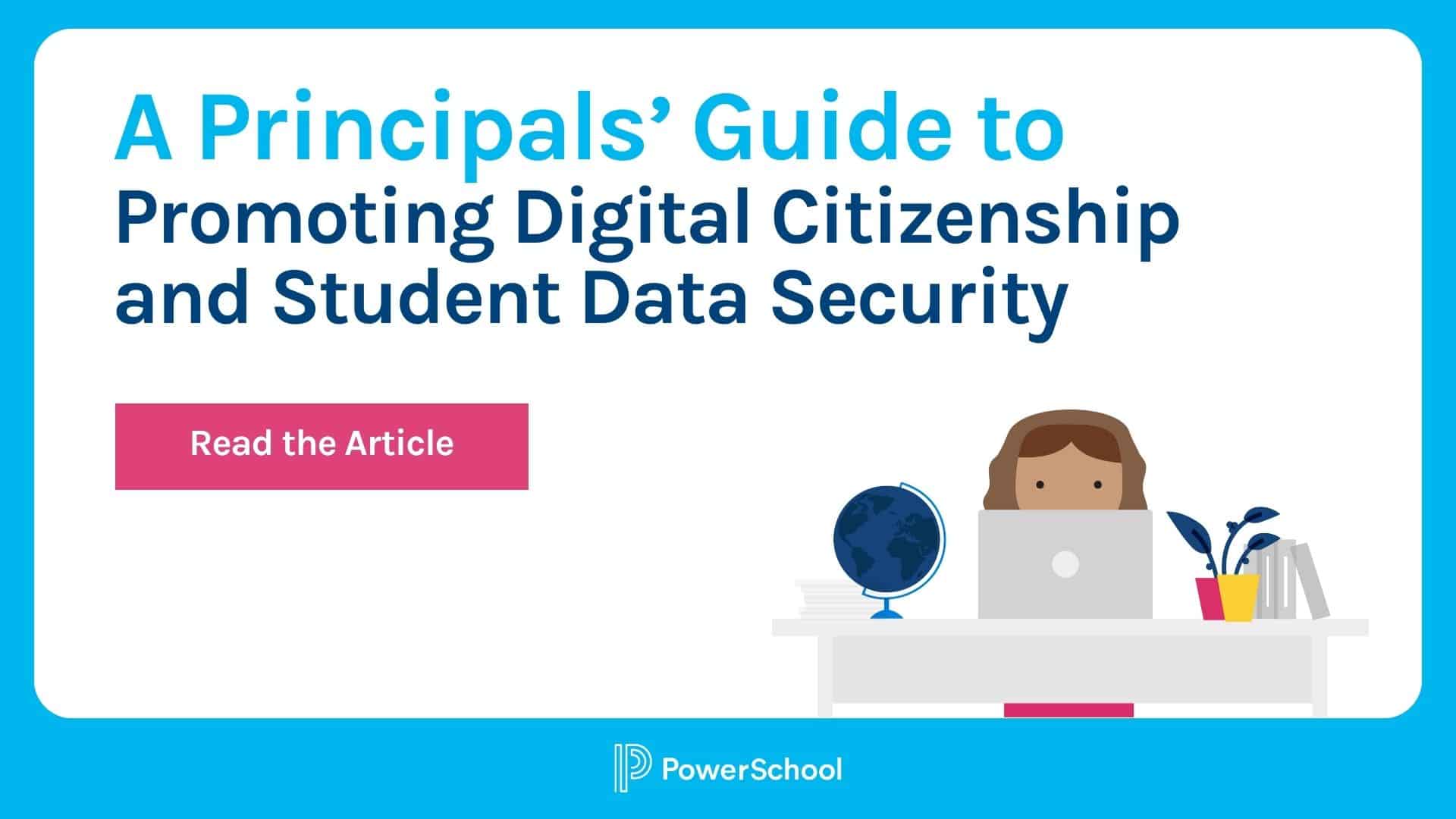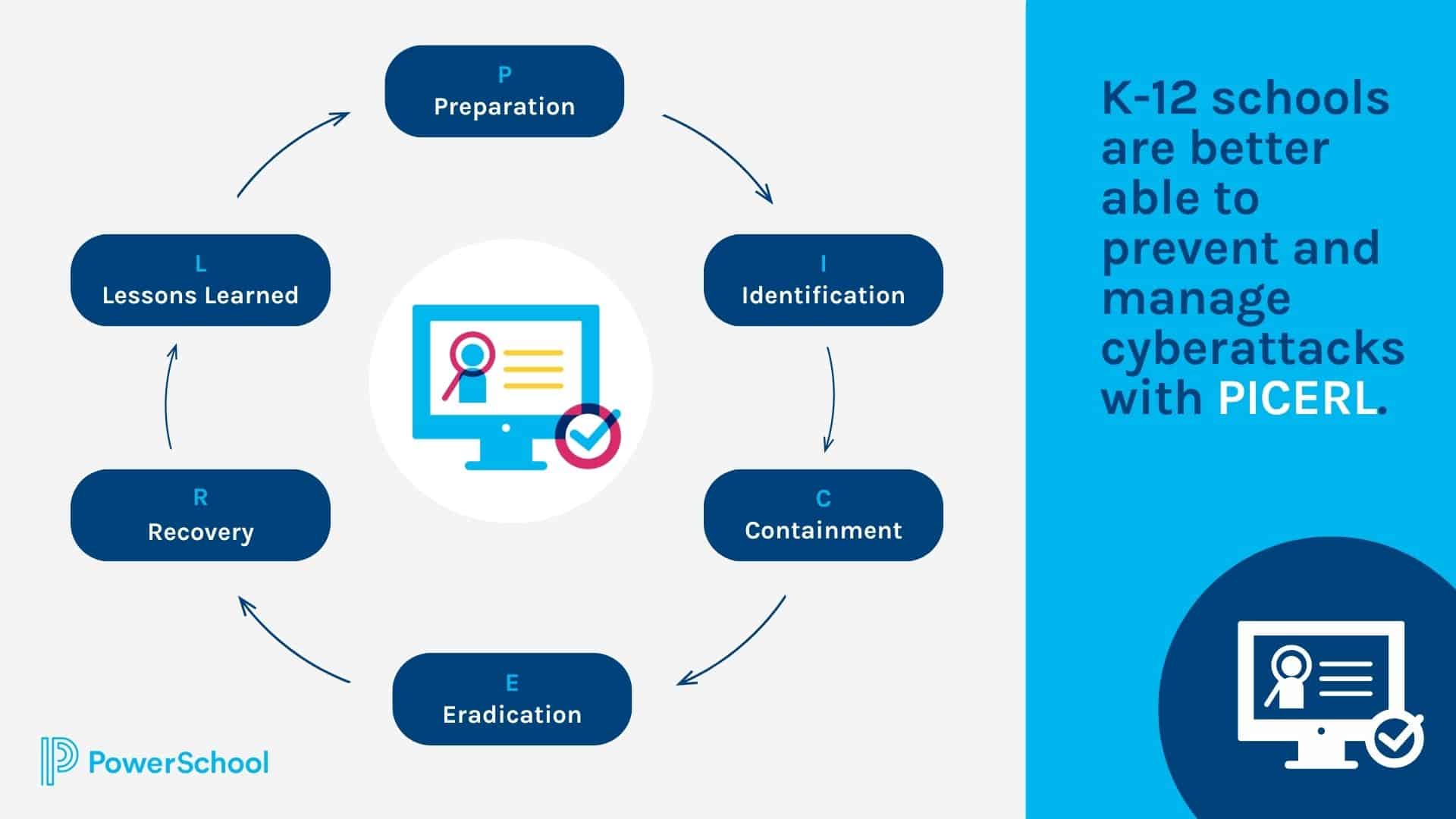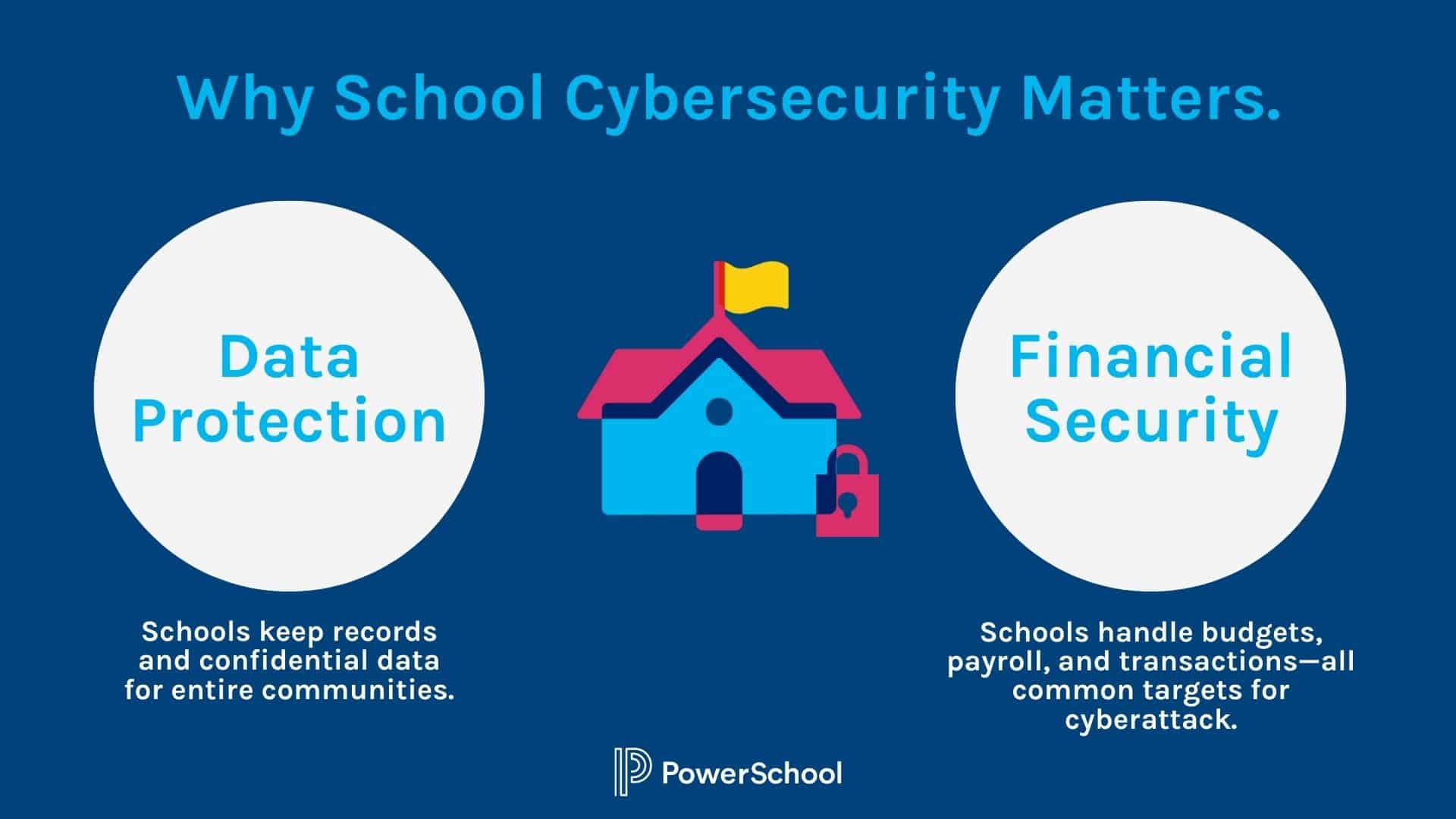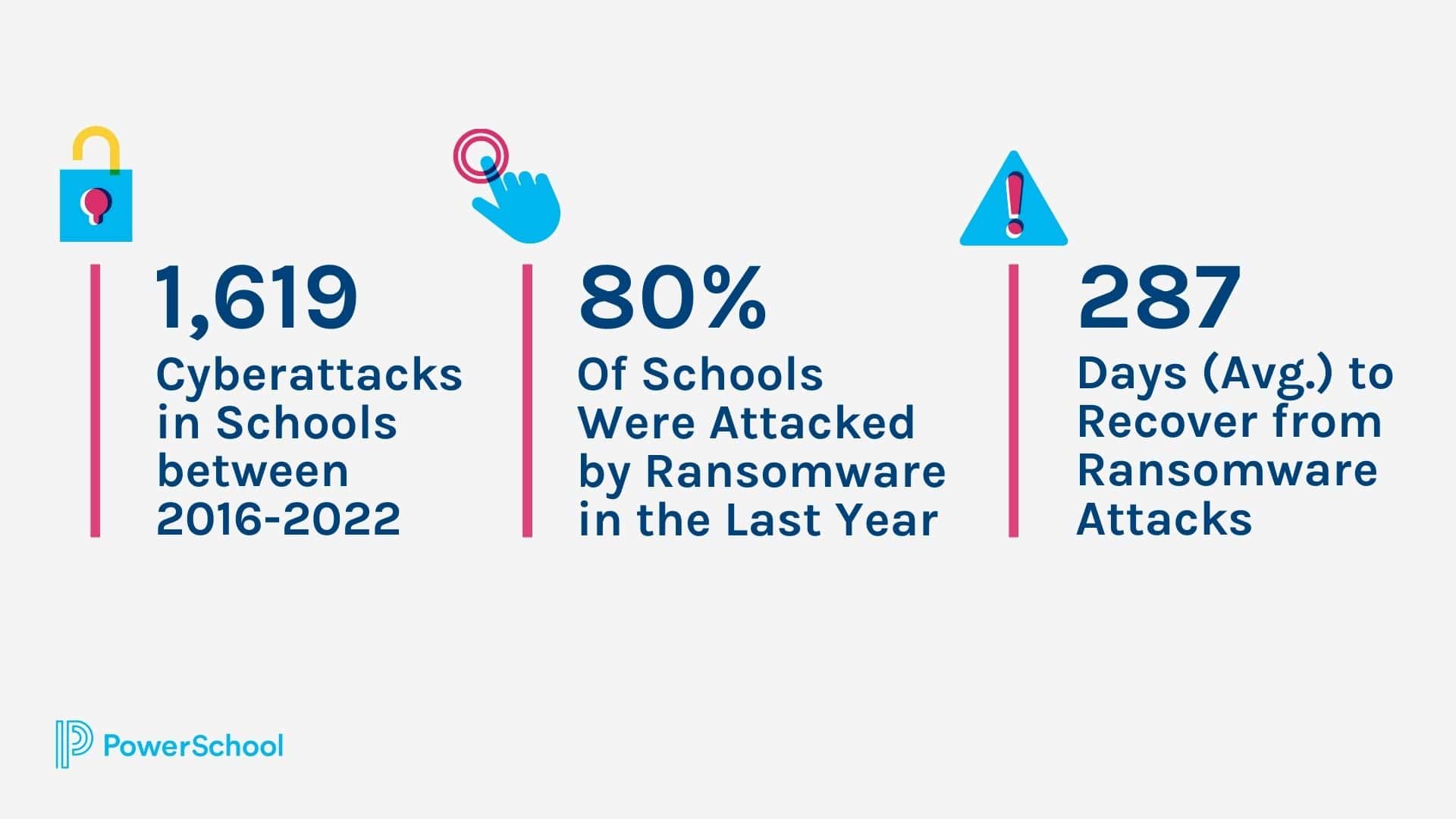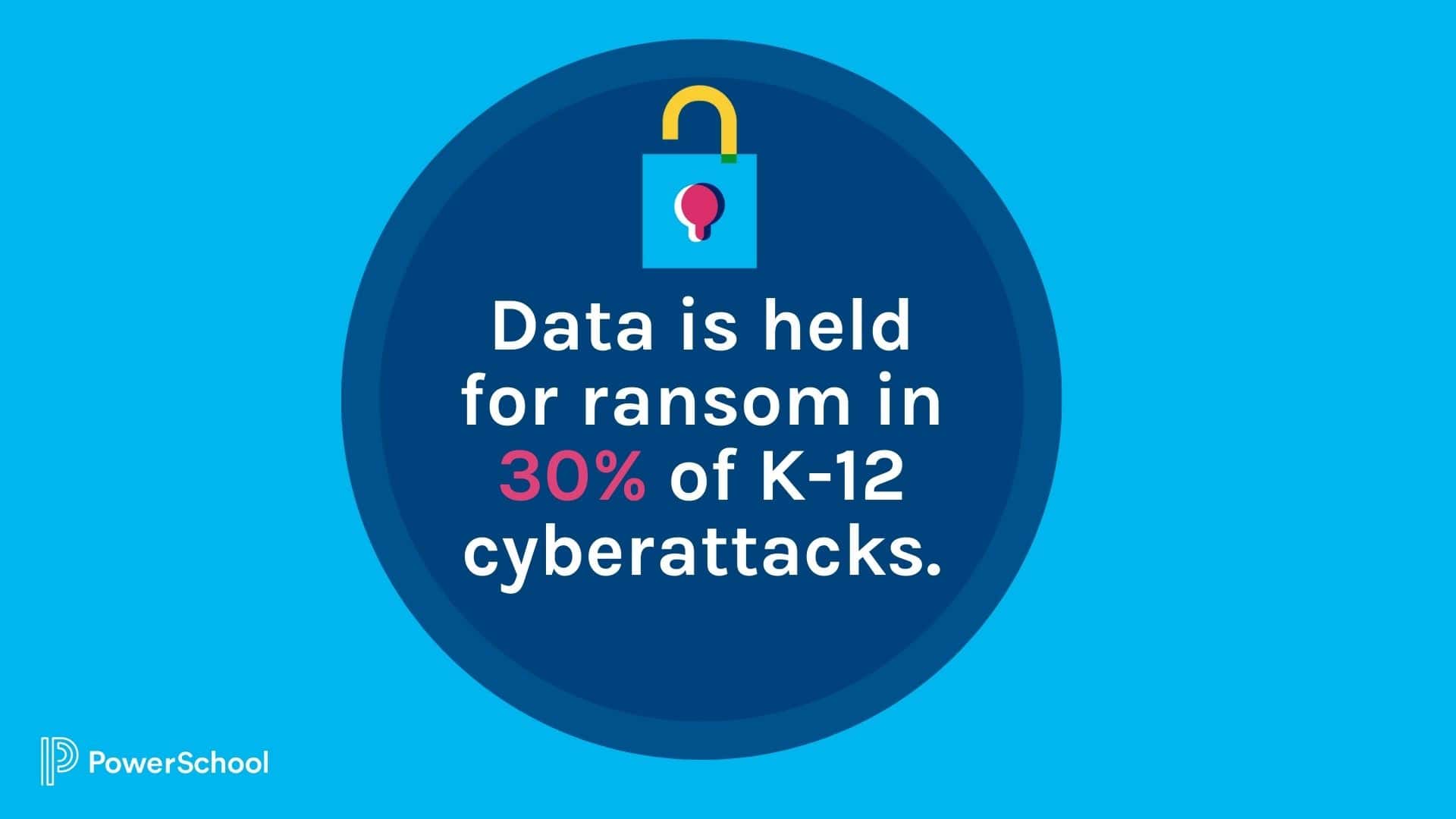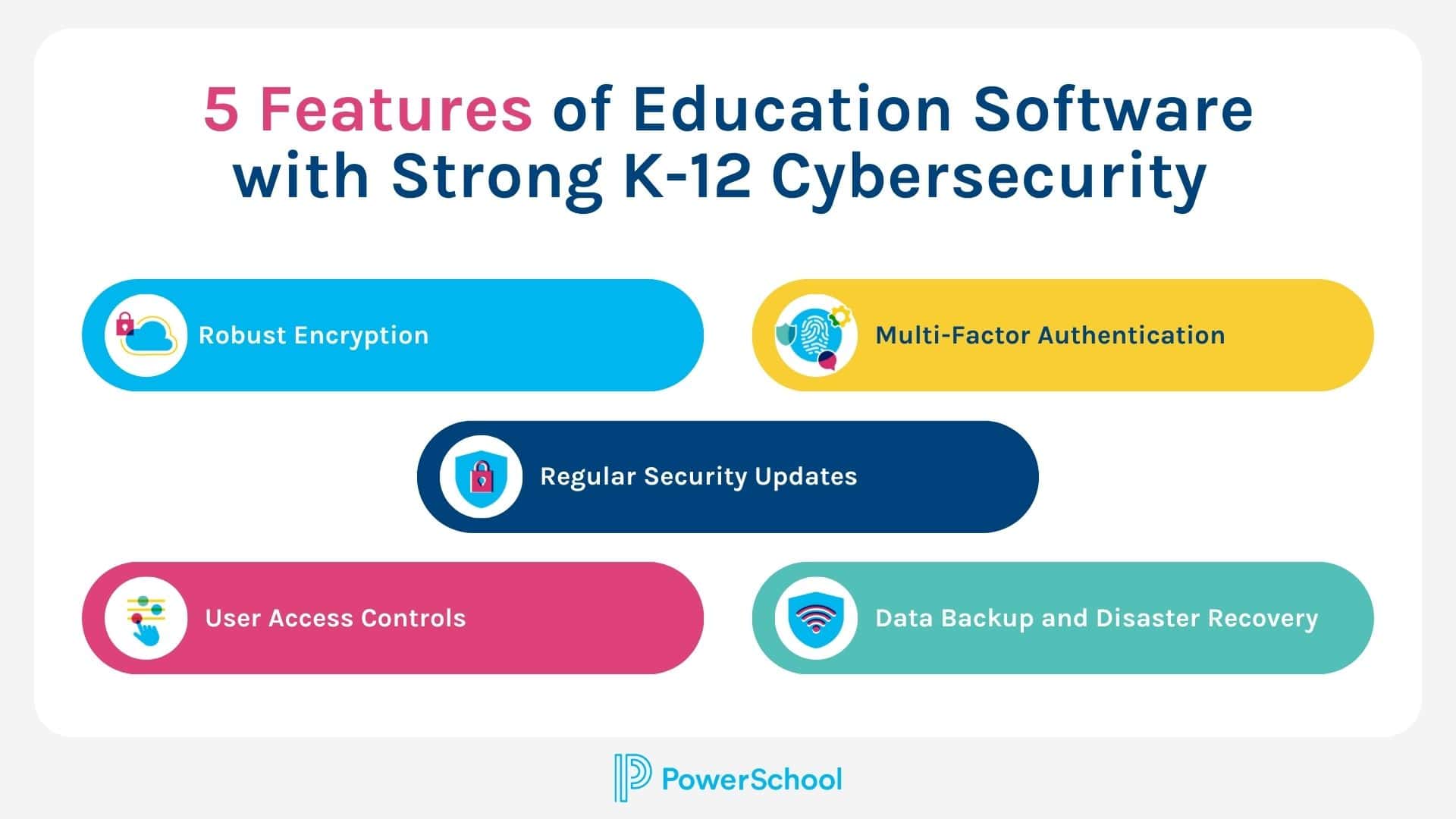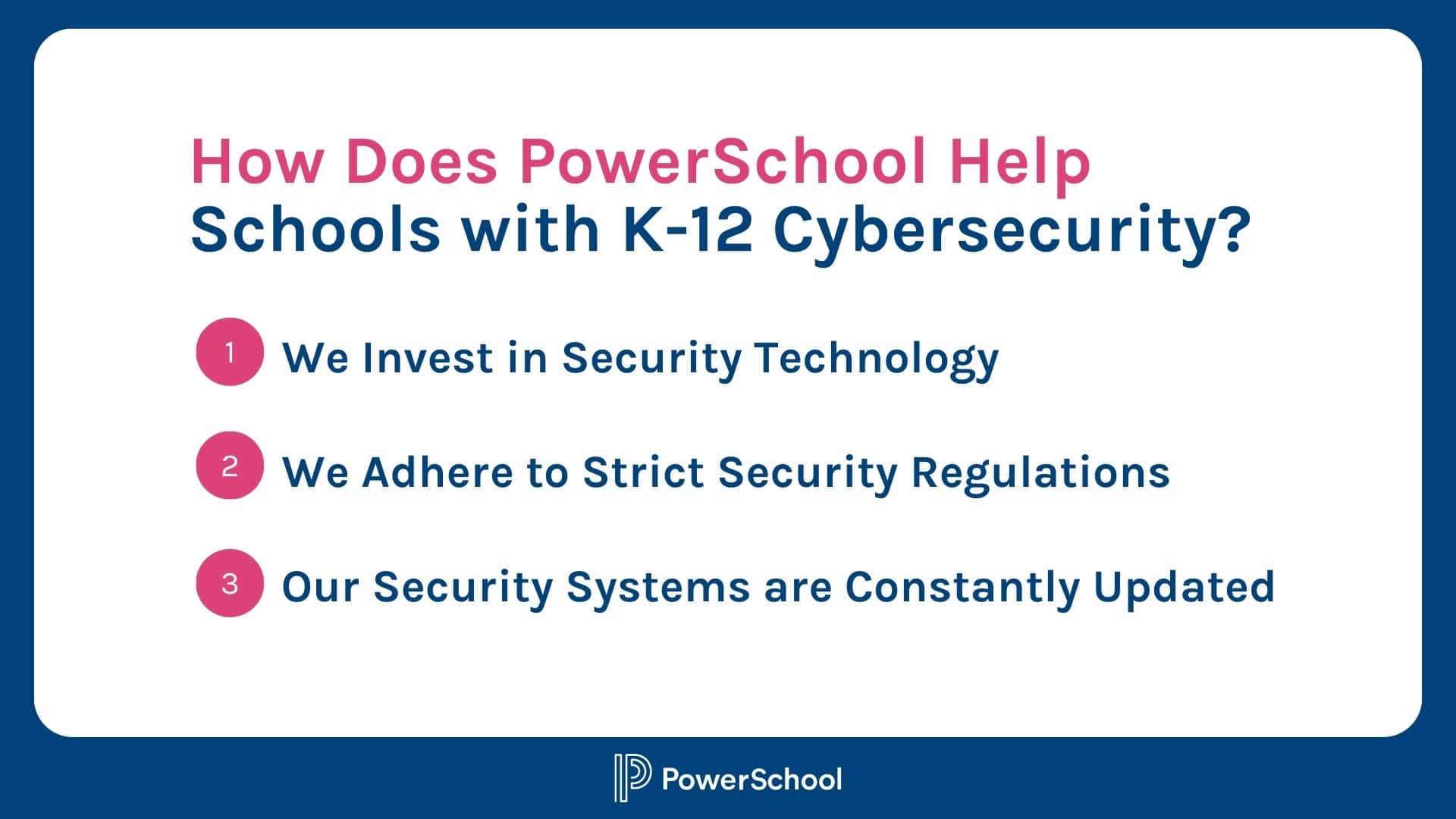Just as the internet is part of our daily lives, so is the threat of cyberattacks. When it comes to K-12 cybersecurity, threats can have a wide-reaching impact on students, families, staff, and a district’s ability to carry out educational objectives. A recent government report highlights the growing challenge of cybersecurity in schools as they become more dependent on web-based technology to teach the next generation.
What Is Cybersecurity in a K-12 School District?

K-12 Security Tips That Will Protect Student Data Today
Get the GuideTeachers, parents, and administrators know that student safety matters. When considering cybersecurity in schools, it can be viewed as another facet of school safety. Cybersafety protocols often include policies and measures that protect data and information systems. Tools like firewalls, detection systems, encryption, patches, and others work in concert to defend schools against unauthorized access.
It is essential to educate school students, staff, and stakeholders about best practices to protect confidential data including grades, health information, financial accounts, and records. Training all three of these groups can help them avoid risky online behaviors and deter phishing attempts or scams. Everyone has a role to play when it comes to cybersafety.
Best Practices for Improving K-12 Cybersecurity
Build a culture of digital citizenship
Schools are responsible for teaching students how to use technology responsibly, ethically, and safely. Administrators may do this by communicating district digital citizenship policies. Successful districts offer frequent training on these protocols, ensuring that everyone also knows how to report incidents.
Educators have the power to strengthen an entire school community against the efforts of bad online actors. This works best when they are trained to be mindful of their online activities and promote digital safety as they teach students and interact with parents.
Make a plan
To increase K-12 data security, schools often write plans for dealing with any situation in a “safety and security” playbook. They create a schedule with their internal technology department for updates, backups, and patches—and stick to it. They also have a solid remediation plan to minimize the impact of a cyberattack, if one occurs. A good place to start is the PICERL process (Preparation, Identification, Containment, Eradication, Recovery, and Lessons), which helps schools consider multiple stages of treating any security risk.
Conduct a security audit at least every six months.
A third-party audit will help school teams understand how well they incorporate cybersafety. Auditors can help schools understand the contents of their network in an objective way. They may suggest improving system interoperability so that data is spread less broadly across the internet. This holistic view of a district’s technology systems can help leaders make informed decisions and take appropriate actions when needed.
Clarify your practices and processes for devices you distribute at school
Here are some good questions to ask, according to The Consortium for School Networking:
- Have administrative rights for end users been removed so students can’t install unauthorized software on the devices?
- Does your web content filtering protect these devices when they’re used remotely?
- Is antivirus/anti-malware software installed on each device?
- If you’re using a web conference system, are the video/audio calls encrypted?
- Can the system have recording enabled for the teacher but disabled for the students?
- Where are recordings stored?
- How much effort is required to get secure devices distributed with all software and operating systems functioning properly?
Know your vendors
School vendors often fall victim to K-12 cybersecurity threats, placing millions of students and faculty in harm’s way. In fact, 55% of school cybersecurity incidents in the past five years originated from vendors who supplied schools with items like furniture, printers, paper, food, athletic gear, and more. This is why school leaders should find out how much information is publicly available about their vendors’ security features and their commitment to safekeeping data. These questions, among others, are often overlooked in favor of simply trusting that third-party systems are safe.
Top 4 Reasons K-12 Cybersecurity is Important
Personal Data Protection
Schools store a large amount and wide variety of personal data—like grades, records, and payroll details—that is commonly targeted through breaches, online theft, or unauthorized access. Cybersecurity helps protect this data from malicious attacks.
Compliance
Schools are ethically and legally obliged to ensure student privacy. Schools must comply with laws that protect data like the Family Educational Rights and Privacy Act (FERPA) in the United States, or they may face legal consequences.
Reputation and Goodwill
If a school fails to adequately protect sensitive data and a breach occurs, they may face damage to their reputation and goodwill within their community. The trust that a school builds with community members and partners is invaluable, and breaking that confidence is simply a risk not worth taking.
Financial Security
Cyberattacks can devastate a district financially and impact students’ education. Often, schools report monetary losses between $50,000 to $1 million if they face a cybersecurity incident.
3 Ways Cybersecurity Affects K-12 Schools
The number of school data security incidents is steadily increasing, yet the challenges they cause are further-reaching than you might expect. Here are three ways that cybersecurity affects schools.
1. Instructional Loss
Significant instructional loss occurs when schools are forced to shut down due to a breach or ransomware attack. In general, it can take up to nine months to recover from a cyberattack, and the average recovery time for a ransomware attack is 287 days. Students at these schools lose about three weeks of valuable instruction. In addition to instructional loss, communities can suffer because families rely on schools for school medical services, meals, and social and emotional support.
2. Communication breakdowns
Cybersecurity incidents can disrupt email services, phone services, document storage, teacher feedback systems, state data reporting tools, and other communication processes. This affects the productivity of teachers and students. In addition, some communication failures can become a safety issue if a breach disconnects a school from public services or hinders their ability to manage door-locking systems.
3. Financial impacts
An average data breach can cost an organization $4.24 million. This total accounts for lost data, revenue, lost time, and other challenges. In schools specifically, data is held for ransom in about 30% of cyberattacks, with an average attacker requesting $268,000 in return for not leaking sensitive data.
In early 2023, one ransom demand placed on a Minnesota district totaled $1 million. In another 2023 instance, a school district in Connecticut lost over $6 million when hackers accessed emails between its chief operating officer and district vendors, eventually pretending to be both. They transmitted the stolen funds to a separate account, and almost half of the money remains missing.
Financial impacts like these have increased exponentially in recent years, and so has cybersecurity insurance, with rates increasing 25-300% from 2021 to 2022. One Illinois school district reported that its cybersecurity insurance policy rates went up 334% in one year’s time.
If a school district faces a security breach, the cost of losses do not fully account for the financial hit they could face. A new law related to class-action lawsuits over data breaches could lead to more school systems facing lawsuits as well, since proof of harm to plaintiffs is no longer required.
What is the White House K-12 Cybersecurity and Data Protection Initiative?
The K-12 Education Technology Secure by Design Pledge was developed by the Cybersecurity and Infrastructure Security Agency (CISA) and the U.S. Department of Education. The initiative was announced at First Lady Jill Biden’s Cybersecurity Summit on August 7th, 2023 at the White House. PowerSchool has signed the pledge, and CEO Hardeep Gulati was invited to speak at the summit.
Gulati highlighted PowerSchool’s cybersecurity leadership and initiatives including cloud infrastructure security, cyberdefense, and governance risk and compliance. PowerSchool already secures over 80% of the school districts across all U.S. states, including 90 of the top 100 districts by student population.
“Our primary mission is to personalize education for every student, and that journey starts with our responsibility to protect and safeguard the over 45 million students we serve today,” he said, adding that PowerSchool defends its stakeholder districts against over one billion cyberattacks each year.
What is the State and Local Cybersecurity Grant Program?
Cybersecurity threats and attacks continue to increase. To help address the issue, the U.S. Department of Homeland Security will offer $1 billion in funding through the State and Local Cybersecurity Grant Program (SLCGP). This funding will be available to state, local, and territorial governments—including school districts—over the next four years.
The purpose of these grants is to address cybersecurity threats to information systems operated by—or on behalf of—state and local governments. At least 80% of a state’s award must be given to local government agencies like school districts.
5 Features of Education Software with Strong K-12 Cybersecurity
When considering education software with strong cybersecurity, you want to ensure the protection of sensitive data. Here are five essential features to look for.
1. Robust Encryption
The software should employ strong encryption protocols to safeguard student and employee data that is stored and data that is transferred. This ensures that any student data remains protected from unauthorized access.
2. Multi-factor Authentication
Just as it is common in the financial sector, software for education should also prompt its users with an extra layer of security that requires users to provide multiple forms of verification, such as a password and a unique code sent to their mobile device or email. This helps prevent bad actors from accessing data if passwords are compromised.
3. Regular Security Updates
The education software company should have a history of frequent updates to offer security measures that address vulnerabilities or emerging threats. Regular updates demonstrate the commitment of the software provider towards maintaining a secure environment for users.
4. User Access Controls
It is crucial for education software to have customizable user access controls. These controls allow administrators to give certain amounts of information and privileges to specific people according to their role or duties. This ensures that only authorized individuals—such as information technology professionals and budget authorities—can access the sensitive data or perform certain actions within the system.
5. Data Backup and Disaster Recovery
Look for education software that offers regular automated backups of data, preferably stored in cloud-based servers. Additionally, melding the backup system into a disaster recovery plan helps ensure that critical information can be restored quickly in case of system failures or cyberattacks.

K-12 Security Tips That Will Protect Student Data Today
Get the GuideHow Cloud-Hosted Software Improves K-12 Cybersecurity
Cloud-hosted software maximizes K-12 student data security by centralizing the way it is managed. When software is hosted in the cloud, security patches and updates can take place automatically, and threats can be monitored in real-time—which saves efforts by your local IT departments. Cloud-hosted software also improves K-12 cybersecurity because of its robust backup systems that can restore data in case of a cyberattack or hardware failure. Most cloud providers hold certifications for maintaining high security standards, which can provide K-12 institutions with confidence in the security of their systems.
How Does PowerSchool Help Schools with K-12 Cybersecurity?
At PowerSchool, we believe the safe collection and management of student data is essential to student success in the 21st Century classroom.
We Invest in Security Technology
PowerSchool invests in advanced K-12 cybersecurity technologies. These include static and dynamic code scanning, best-in-class firewalls, and over 30 annual penetration tests. We have over 10,000 servers that we monitor 24/7, and we block one billion web attacks annually.
We Adhere to Strict Security Regulations
While we adhere to all state, province, and federal regulations, we go beyond those regulations. PowerSchool independently audits and verifies our security management system annually to ensure that it meets international standards for security management systems, achieving the ISO:27001 certification and SOC2 Type 2. These compose the gold-standard data security certification for business service providers.
Our Security Systems are Constantly Updated
PowerSchool regularly releases K-12 data security updates and patches to address vulnerabilities and protect against emerging threats. For schools using PowerSchool’s cloud-based solutions, the platform leverages cloud security measures and data centers’ security protocols to protect student data and ensure system reliability.
K-12 Data Security & Privacy Resource Kit
Get resources for guidance, insights, and best practices to improve your school or district's data security.
Access Now

